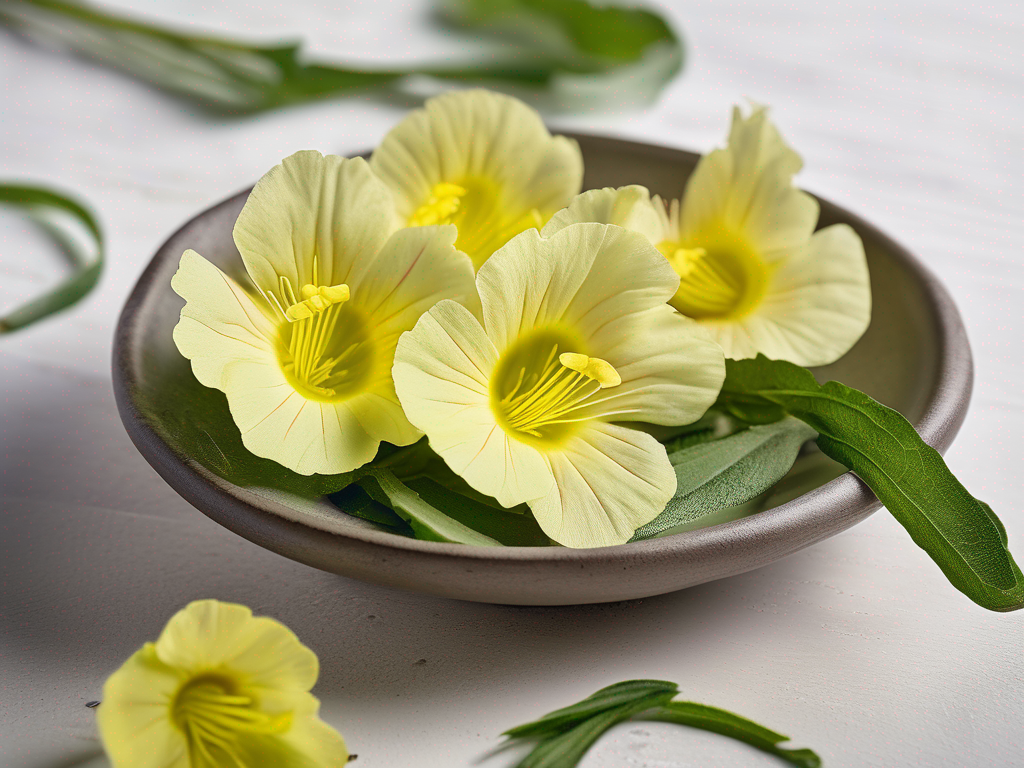
Maximizing the Shelf Life of Evening Primrose Oil: A Comprehensive Guide
Get Your Free Food Safety Cheat Sheet
30 most common foods with instant answers. Print it and stick it on your fridge—completely free!
Maximizing the Shelf Life of Evening Primrose Oil: A Comprehensive Guide
Evening primrose oil is a popular supplement known for its numerous health benefits, including its high content of essential fatty acids. To ensure you get the most out of this valuable oil, proper storage is crucial. In this guide, we will discuss the best practices for storing evening primrose oil to extend its shelf life and maintain its quality. (Evening primrose)
Understanding Evening Primrose Oil
Before diving into storage tips, let's take a closer look at evening primrose oil. [Evening primrose](/food/evening primrose) is derived from the seeds of the evening primrose plant (Oenothera biennis) and is rich in gamma-linolenic acid (GLA), an omega-6 fatty acid with anti-inflammatory properties. This oil is commonly used for various purposes, including skincare, hormonal balance, and overall wellness.
Factors Affecting Evening Primrose Oil Shelf Life
Several factors can impact the shelf life of evening primrose oil, including:
Light Exposure
Light can accelerate the oxidation process in oils, leading to rancidity and a reduction in potency. It is essential to store evening primrose oil away from direct sunlight or bright artificial light.
Heat
Exposure to heat can cause the oil to degrade and lose its nutritional value. It is recommended to store evening primrose oil in a cool, dark place to prevent heat damage.
Air and Oxygen
Oxygen exposure can promote oxidation, leading to the deterioration of the oil. To minimize air exposure, ensure the bottle is tightly sealed after each use.
Contamination
Contamination from moisture, air, or other substances can compromise the quality of evening primrose oil. It is crucial to use clean utensils and containers when handling the oil.
Best Practices for Storing Evening Primrose Oil
Now that we understand the factors that can affect evening primrose oil's shelf life, let's explore the best practices for storing this valuable oil:
1. Choose the Right Container
Opt for a dark-colored glass bottle to protect the oil from light exposure. Amber or cobalt blue bottles are ideal for storing evening primrose oil.
2. Store in a Cool, Dark Place
Keep the oil away from heat sources and direct sunlight. A pantry or cupboard away from the stove or oven is a suitable storage location.
3. Seal the Bottle Properly
Ensure the bottle is tightly sealed after each use to prevent air from entering and causing oxidation. This will help maintain the oil's freshness and potency.
4. Avoid Exposure to Moisture
Moisture can lead to the growth of mold and bacteria in the oil. Store the bottle in a dry environment and avoid introducing moisture during use.
5. Check for Signs of Spoilage
Regularly inspect the oil for any changes in color, smell, or taste. If the oil appears cloudy, has a rancid odor, or tastes off, it may have spoiled and should be discarded.
Additional Tips for Preserving Evening Primrose Oil
In addition to the storage practices mentioned above, here are some extra tips to help extend the shelf life of evening primrose oil:
- Refrigeration: If you live in a warm climate or want to further extend the oil's shelf life, refrigeration can help maintain its freshness.
- Purchase in Small Quantities: Buying smaller bottles of evening primrose oil can reduce the chances of oxidation and spoilage, especially if you don't use it regularly.
- Use a Pump Dispenser: Consider transferring the oil to a pump dispenser to minimize air exposure every time you use it.
Conclusion
Proper storage is essential for maintaining the quality and potency of evening primrose oil. By following the tips outlined in this guide, you can ensure that your oil remains fresh and effective for an extended period. Remember to store it in a cool, dark place, away from heat, light, and moisture, and always check for signs of spoilage before use. With the right care and attention, your evening primrose oil can continue to benefit your health and well-being. (Evening primrose)
Related Posts
Here are some other articles you might find helpful:
Authoritative Food Safety References
These agencies and university labs inform every tip and health precaution we publish.
USDA FoodKeeper – Cold Storage Guidelines
Official refrigerator, freezer, and pantry timelines maintained by the U.S. Department of Agriculture.
Visit USDA FoodKeeperFDA Produce Safety Rule & Grower Guidance
Field-to-fridge handling practices that prevent contamination of fruits, vegetables, and leafy greens.
Visit FDA Produce SafetyCDC Foodborne Illness Prevention Hub
Surveillance-backed guidance on pathogens, symptoms, and steps to reduce foodborne illness risk.
Visit CDC Food SafetyUC Davis Postharvest Technology Center
University research detailing optimal storage atmospheres for produce after harvest.
Visit UC Davis PostharvestPenn State Extension – Home Food Preservation & Safety
Peer-reviewed extension bulletins on safe canning, chilling, and reheating practices.
Visit Penn State ExtensionGet Your Free Food Safety Cheat Sheet
30 most common foods with instant answers. Print it and stick it on your fridge—completely free! Want more? Upgrade to the complete guide with 70+ foods.
Scan your food directly and get instant safety info using our AI-powered camera feature.